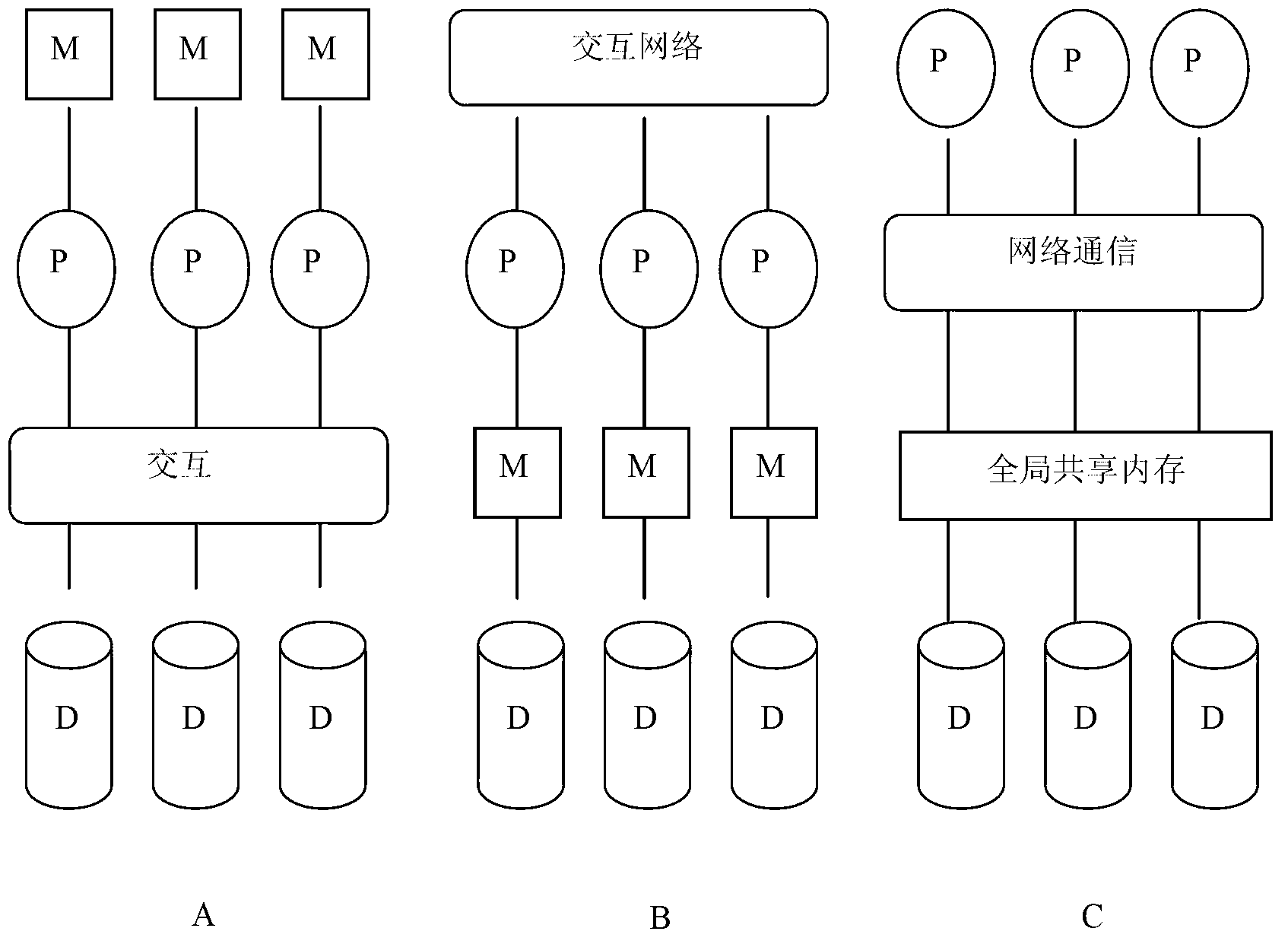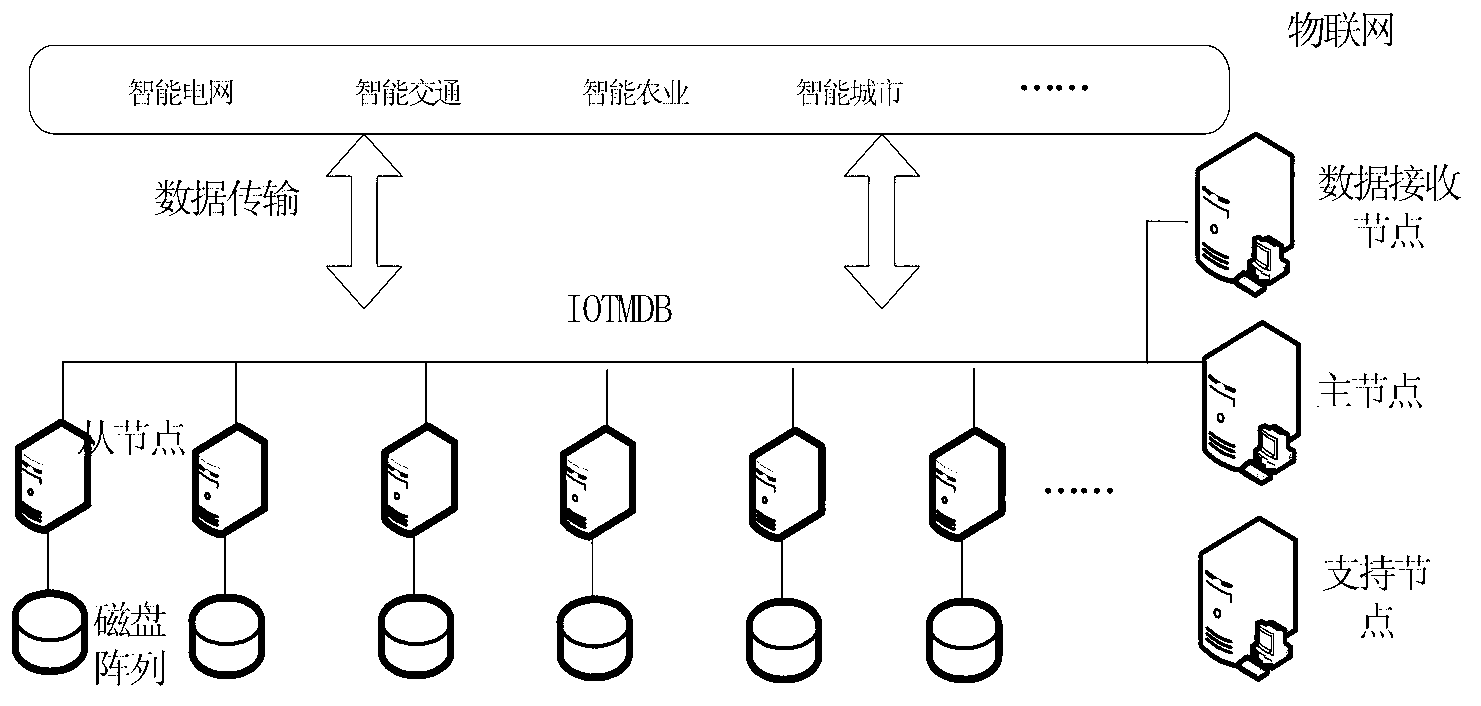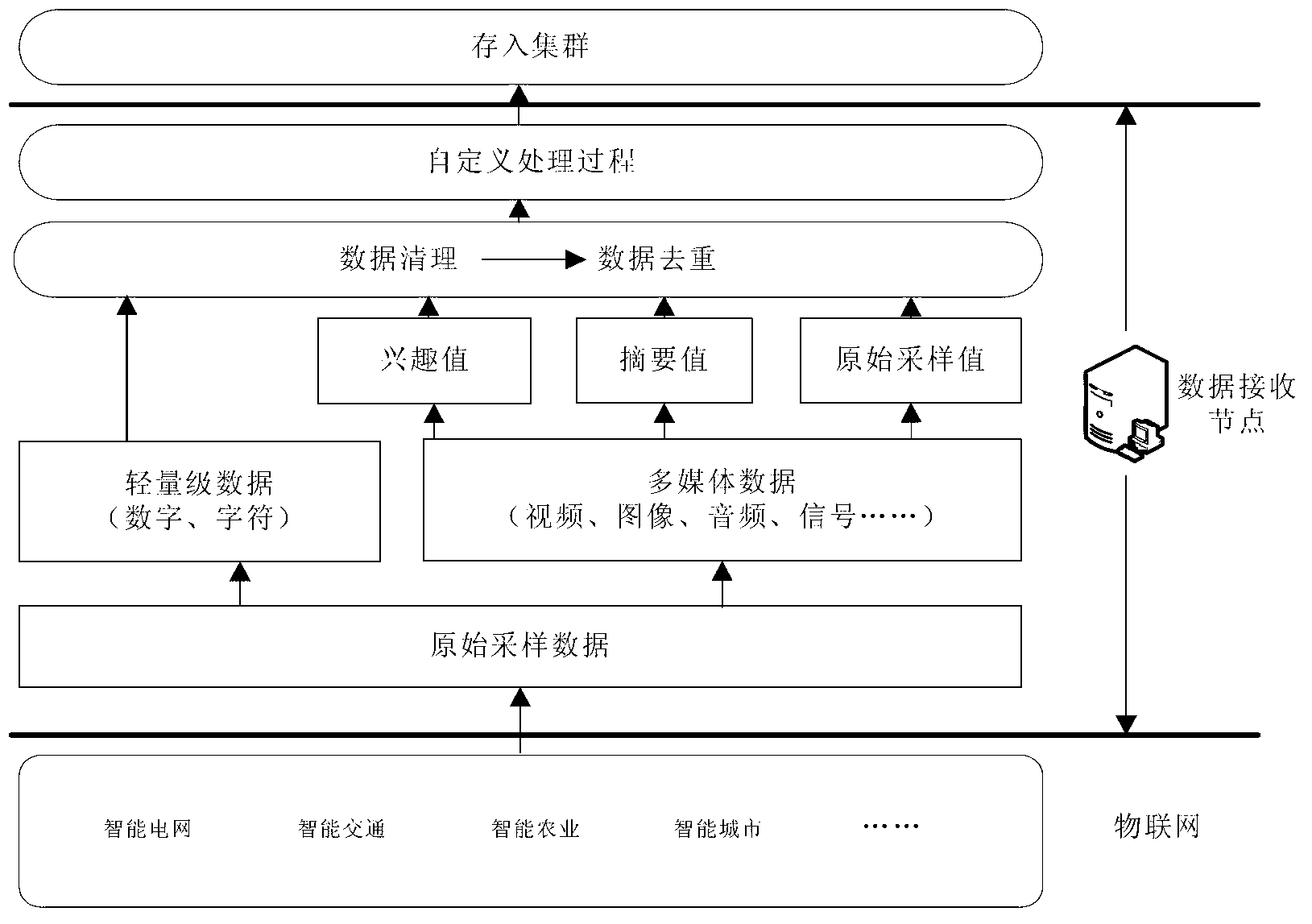Method and system for storing mass data of Internet of Things (IoT)
A technology of massive data and storage system, applied in the field of Internet of Things storage, can solve the problems of inability to flexibly add and delete data fields, restrictions on concurrency, and low database performance.
- Summary
- Abstract
- Description
- Claims
- Application Information
AI Technical Summary
Problems solved by technology
Method used
Image
Examples
example 1
[0118] Example 1: Query all illegal license plate numbers whose speed exceeds 200km / h between 2012-07-25 and 2012-07-28.
[0119] for each SampleRecord in
[0120] set(getByTimeRange(Collection,"2012-07-25","2012-07-28") AND
[0121] getElement(speed,SampleRecord).value>200):
[0122] return getElement(plateNumber, getMultiMedia(key, SampleRecord)).value
example 2
[0123] Example 2: Query the shipping track whose ID is "ID123".
[0124] for each SampleRecord in
[0125] set(sort(getRecordSet(Collection,"ID123"),t))
[0126] return getElement(SampleRecord,loc).value
example 3
[0127] Example 3: Query the 10 nearest mobile phone locations from (112.02,111.01)
[0128] for each SampleRecord in Collection:
[0129] Point=getElement(loc,SampleRecord).value
[0130] sort(set(getObjDistance(Point,(112.02,111.01))))
[0131] return set.limit(10)
[0132] 2. Index
[0133] In the Internet of Things, one of the most important characteristics of sampled data is temporal and spatial correlation. A well-designed index helps to improve the retrieval efficiency of spatiotemporal correlation. In the storage system designed by the present invention, the space is not limited to the GPS space, and the user can define any size of space, for example, a space of 30 kilometers × 30 kilometers can be defined to represent the geographical space within the fifth ring road of Beijing urban area . At the same time, the space can also be expanded according to actual needs. If it is necessary to include the space within the sixth ring road in Beijing, it can...
PUM
 Login to View More
Login to View More Abstract
Description
Claims
Application Information
 Login to View More
Login to View More - R&D
- Intellectual Property
- Life Sciences
- Materials
- Tech Scout
- Unparalleled Data Quality
- Higher Quality Content
- 60% Fewer Hallucinations
Browse by: Latest US Patents, China's latest patents, Technical Efficacy Thesaurus, Application Domain, Technology Topic, Popular Technical Reports.
© 2025 PatSnap. All rights reserved.Legal|Privacy policy|Modern Slavery Act Transparency Statement|Sitemap|About US| Contact US: help@patsnap.com



